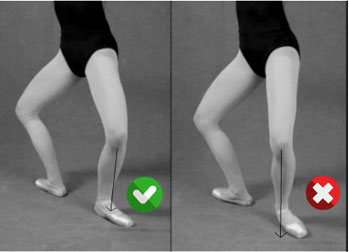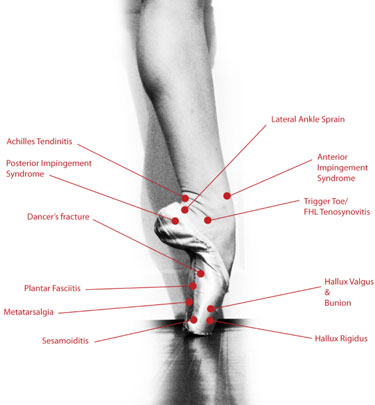Lower Limb Issues with Dancers
- Dr Abbie Clinics
- May 11, 2018
Turnout from the hip – not the foot or knee!
 Most dancers aren’t born with the perfect turnout. One of the biggest issues we see and assess is dancers with a high degree of external tibial torsion (out toed), flat feet, bowed legs, knocked knees, stork legs. These genetic pre dispositions put our dancers at a disadvantage, causing labrum tears at the hip, tight groins, pelvic instability to occur even with the most flexible of dancers.
Most dancers aren’t born with the perfect turnout. One of the biggest issues we see and assess is dancers with a high degree of external tibial torsion (out toed), flat feet, bowed legs, knocked knees, stork legs. These genetic pre dispositions put our dancers at a disadvantage, causing labrum tears at the hip, tight groins, pelvic instability to occur even with the most flexible of dancers.
When bad turnout habits occur over a period of time, the dancer will often have problems. The soft tissues of the knee, hip, ankle and foot joints may be affected. Scoliosis may also be a detriment to a dancer as this may affect balance, aesthetics and create overuse back injuries.
 Did you know?
Did you know?
Ankle Sprains are the most common acute injury in dance. And the worst statistic is it can happen more then once throughout a dancers career!
Knee Injuries
Twisting knees during movement, forcing feet in turnout or losing control when landing a jump can tear the cushioning knee cartilage.
Hamstring Tears
Dancers use the hamstrings in almost every movement of the lower body, making it easy to overload. Tightness is the main cause of these injuries.
Growing Pains
Sever’s Disease and Osgood Schatters are the two common injuries that occur in dancers aged 8-13. Both of these are a tractional pull from the soft growth plate due to rapid growth and harsh repetitive activities. Sever’s is a tractional pull from the Achilles and Os good Schatters is a tractional pull from the tibia and femur causing central knee pain.
Prevent the injuries Before they occur
Injuries can be devastating to a dance career, but you can reduce their occurrence or avoid them – if you know what to do.
Prevention is better then cure, much as we treat the cause rather then treat the signs and symptoms. For our younger dancers we can address tibial torsion issues which can hurt turnout in the future. For our elite dancers we can improve hip range of motion and pelvic stability which makes the body biomechanically sound. So how do we do it?
With orthotics. Orthotics are corrective medically prescribed innersoles designed to support, control and align the foot whilst correcting mechanical issues from the feet up; treating the cause.
Use of orthotic therapy is an excellent treatment regime as it will realign the biomechanical structure and control the excess pronation of the foot, eliminating the tractional pull that occur at the muscles. Orthotics will also stabilize the body and reduce tension on joints reducing muscular fatigue in the process.
What we can do for you?
What we do is:
• Assess and find the root cause of any pain of foot issues
• Offer advice of how to avoid future injury
• Come up with a treatment plan tailored to your needs to support your health


